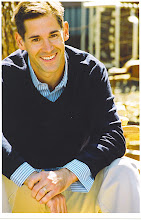
Wednesday, July 30, 2008
The World's Biggest Arms Exporters
JUST five countries supplied 80% of global arms exports between 2003 and 2007, according to a recent report by the Stockholm International Peace Research Institute, a think-tank. SIPRI counts the deliveries of large conventional weapons, each of which are assigned a value according to cost, strategic importance and other criteria. America supplied a third of global exports by this count, with South Korea and Israel the main buyers. China is Russia's best customer, taking 45% of its total exports. China is also the largest recipient of imports, accounting for 12% of the global total. Other big importers include India and the United Arab Emirates.


Inside Professor Obama’s Classroom
 Courtesy The Caucus
Courtesy The Caucus Examining the Course Materials
We’ve asked four legal experts to take a look at then-Professor Barack Obama’s course materials and offer some insight into what they say about Mr. Obama’s teaching methods, priorities and approach to the Constitution.
Pamela S. Karlan, a law professor at Stanford, an expert on voting issues and a former clerk to Justice Harry A. Blackmun, concludes that “it’s hard to tell whether Professor Obama is simply playing it close to his vest – that is, he has strong views but thinks the classroom isn’t an appropriate place for revealing them – or whether his views fall within the mainstream of the constitutional law professoriate, which tends to be moderately liberal on individual rights issues.”Pamela S. Karlan | 1:30 p.m. Three preliminary reactions to this really interesting story.
1. In thinking about what inferences we might draw about a President Obama from a Professor Obama, we’re handicapped a little by a distinctive aspect of the University of Chicago Law School’s constitutional law curriculum. Unlike most other first-tier American law schools, Chicago separates into two separate courses what are often referred to as the “structural” and “individual rights” provisions of the Constitution. (This is probably more a function of the fact that Chicago uses three shorter terms each academic year, rather than the more conventional two longer ones, so each course covers a bit less territory.)
So the course that Professor Obama taught did not examine many of the issues that have come to the forefront of constitutional debate during the last eight years – such as the president’s inherent powers under Article II of the Constitution to disregard limitations placed on his authority by Congress or other aspects of what’s referred to as “separation of powers” (the checks and balances among the three branches of government).
The only slight hint we get about the war on terror, for example, comes from one question about handing out limited supplies of an anti-biological weapon drug, and there we’re focusing on individual rights, not the government’s powers.
2. Looking at the exams for the Constitutional Law class, one of the most striking features to a law professor is how conventional they are. If you put Professor Obama’s exam questions in a pile with the questions asked by me or my colleagues – or if you asked one of us to prepare model answers to his exam questions – you would not be able to guess which ones he prepared and which ones were prepared by full-time legal academics.
There are at least three inferences I draw from this. First, Senator Obama has a first-rate mind for legal doctrine and could have been a first-rate academic had his interests gone in that direction. He would have been most unlikely – even beyond the fact that his values differ – to have bought into the legal work underlying many of the current Administration’s policies, such as the incomplete “torture memos.”
Second, Senator Obama has a sensitivity to role. By this I mean that he doesn’t appear to have used his classroom as a platform for pushing his own pet theories of constitutional law. He seems to have taught “down the middle” in a way that gave the students the tools to be fine constitutional lawyers but didn’t require them to agree with his position. By contrast, I’ve seen other constitutional law professors’ exams and model answers where a student who disagrees with the professor’s idiosyncratic approach or policy preferences would have found it hard to do well.
Third, and perhaps related, precisely because the examinations and the model answers are so conventional, it’s hard to tell whether Professor Obama is simply playing it close to his vest – that is, he has strong views but thinks the classroom isn’t an appropriate place for revealing them – or whether his views fall within the mainstream of the constitutional law professoriate, which tends to be moderately liberal on individual rights issues.
3. The syllabus for Professor Obama’s Racism and the Law class is an interesting one. The materials are not particularly surprising, but seem relatively well thought-out. But their focus, as well as the focus of the exam questions, tends to be almost entirely on blacks and whites, with only one session devoted to the distinctive issues surrounding Native Americans – and that session being primarily historical – and relatively little attention devoted to questions that arise with respect to Latinos.
That’s not surprising as a matter of law school syllabi – the black-white paradigm remains dominant. And the syllabus is fifteen years old. But it’s interesting that Senator Obama, despite having spent many years in Hawaii, where a number of very interesting questions about multiracial groups and indigenous people have been playing out, hewed so closely to the black-white line. I would imagine if he were teaching such a course today, he might have ranged further afield.
Read more...
Subscribe to:
Comments (Atom)
